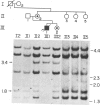Abstract
Ornithine transcarbamylase (OTC) (E.C.2.1.3.3) is an X-linked hepatic enzyme in the urea cycle necessary for ammonia detoxification. Deficiency of OTC results in neonatal hyperammonemia, coma, and death in childhood. Because fibroblasts do not express OTC, prenatal diagnosis in the past has required fetal liver biopsy. Using a complementary DNA (cDNA) for OTC for Southern blot analysis of genomic DNA, we have found probands with complete OTC deficiency from two unrelated families in whom the same TaqI restriction endonuclease site has been altered because of independent, but not necessarily identical, mutations in the OTC gene, suggesting that this site may be a relative hotspot for mutation at a location that is critical for normal gene function. This TaqI alteration has allowed the identification of the individual in each family in whom the mutation originated as well as the exclusion of a recurrence of OTC deficiency in a male fetus at risk for the disease. OTC deficiency joins the growing list of genetic disorders for which Southern blot analysis allows accurate heterozygote detection and prenatal diagnosis in conditions for which they were not previously available.
Full text
PDF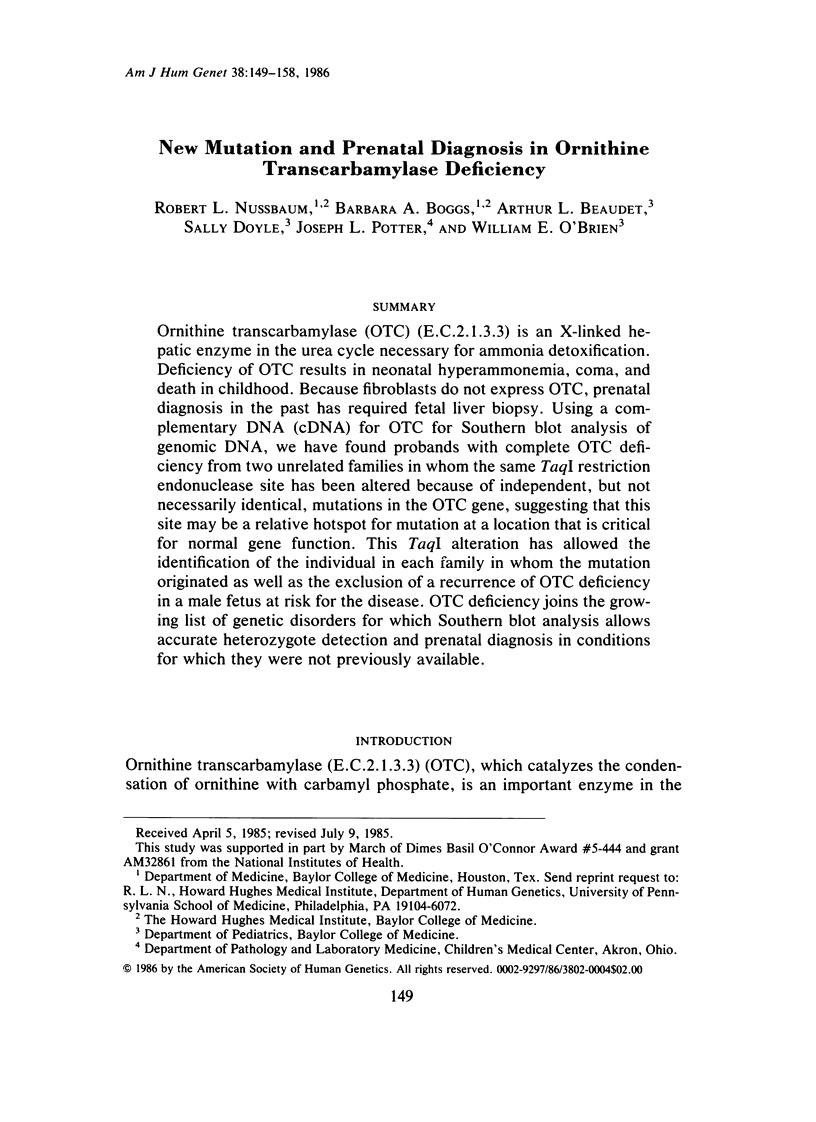
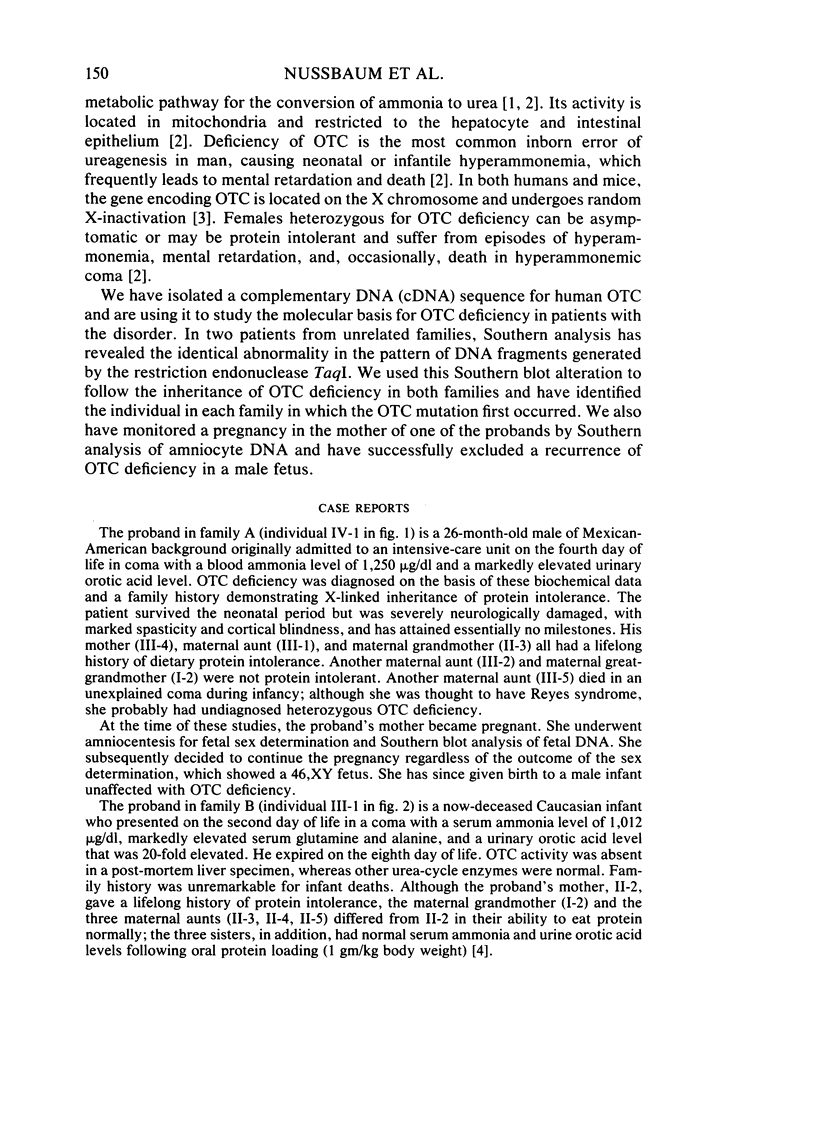
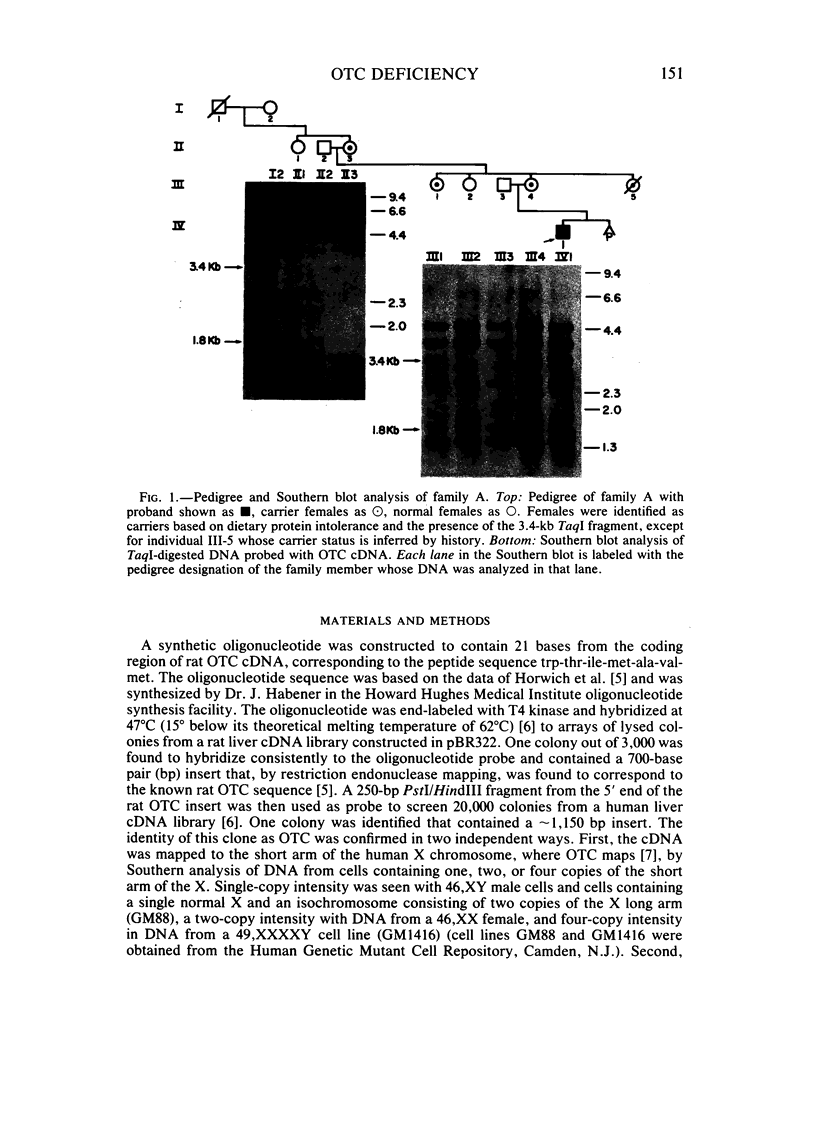
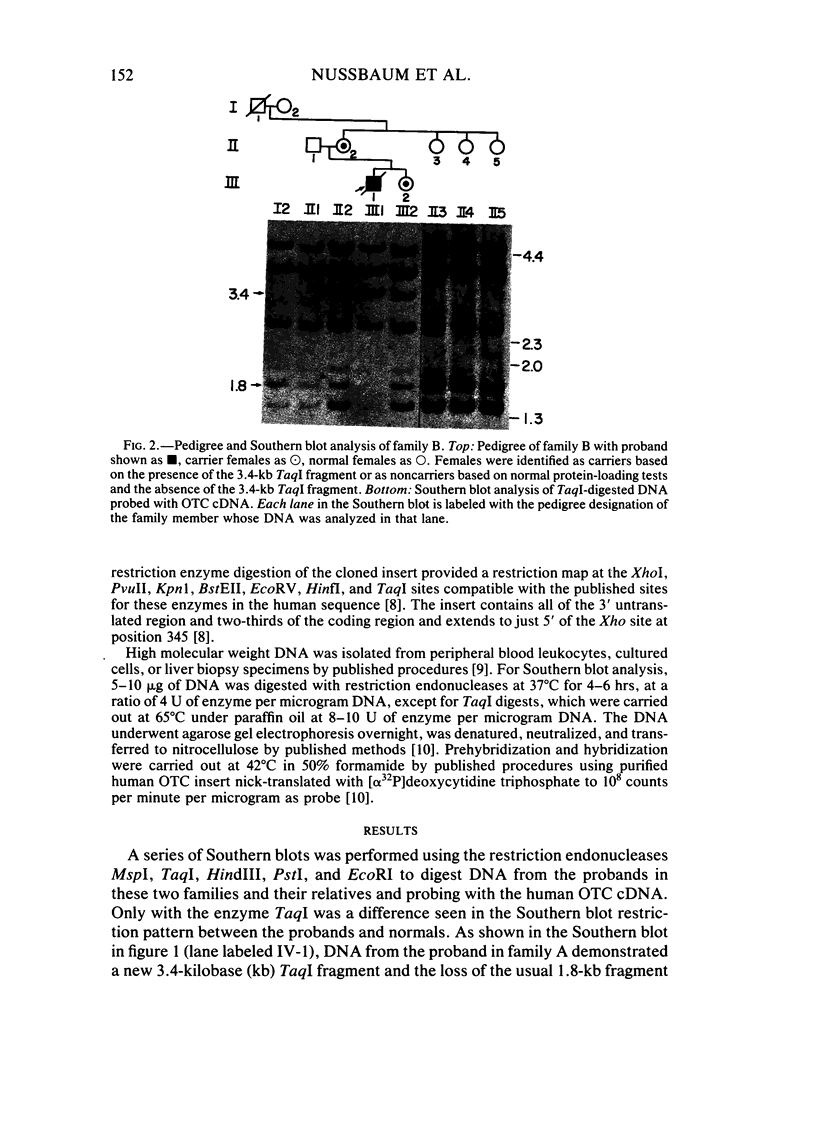
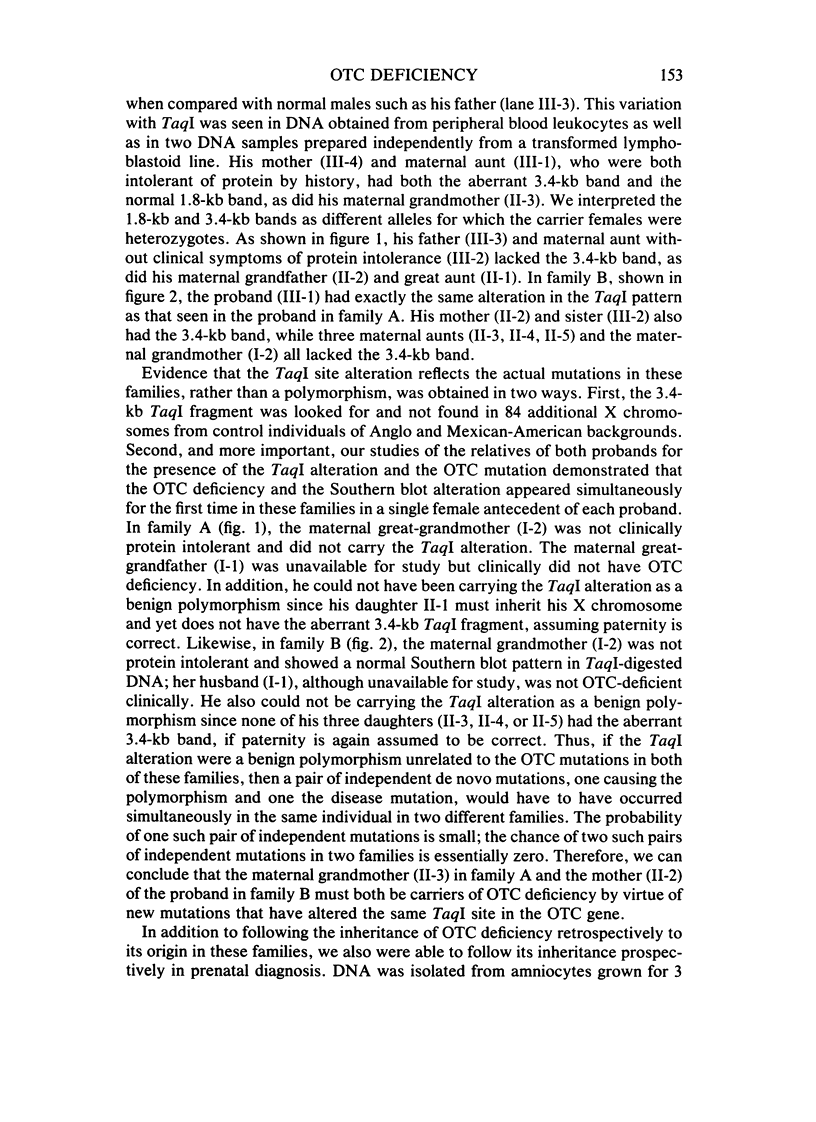
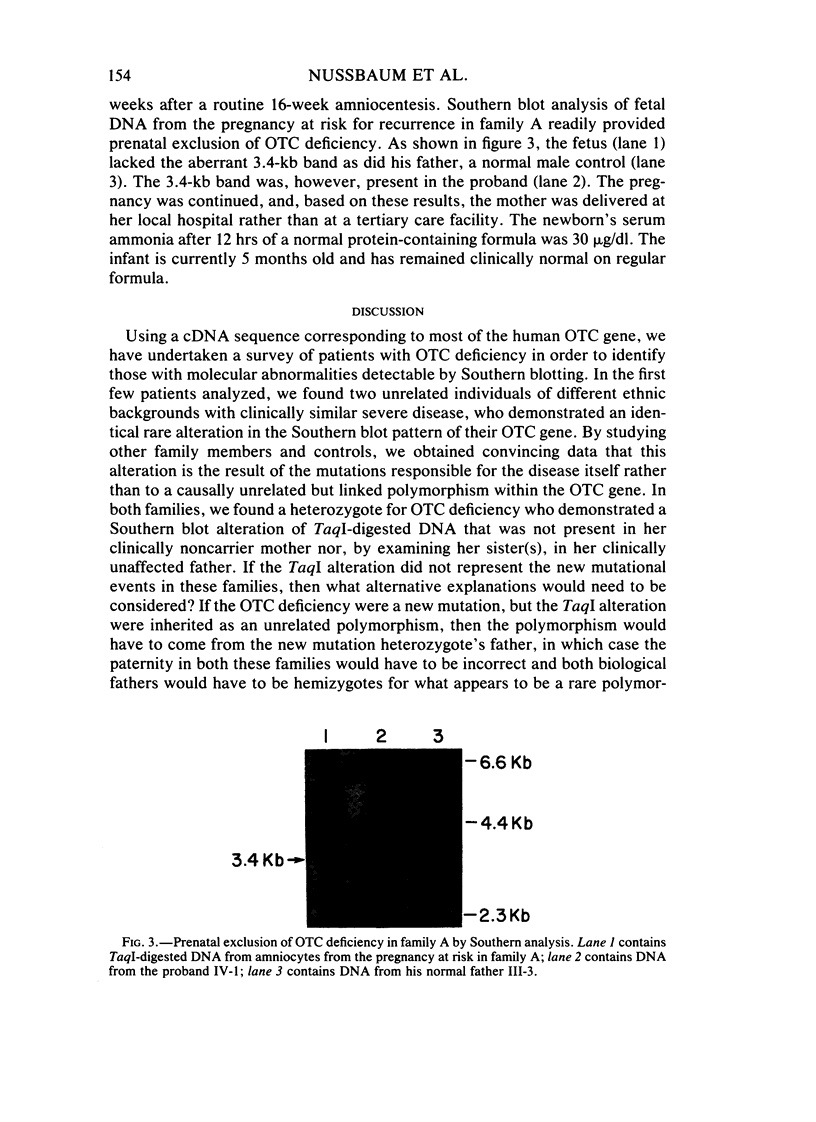
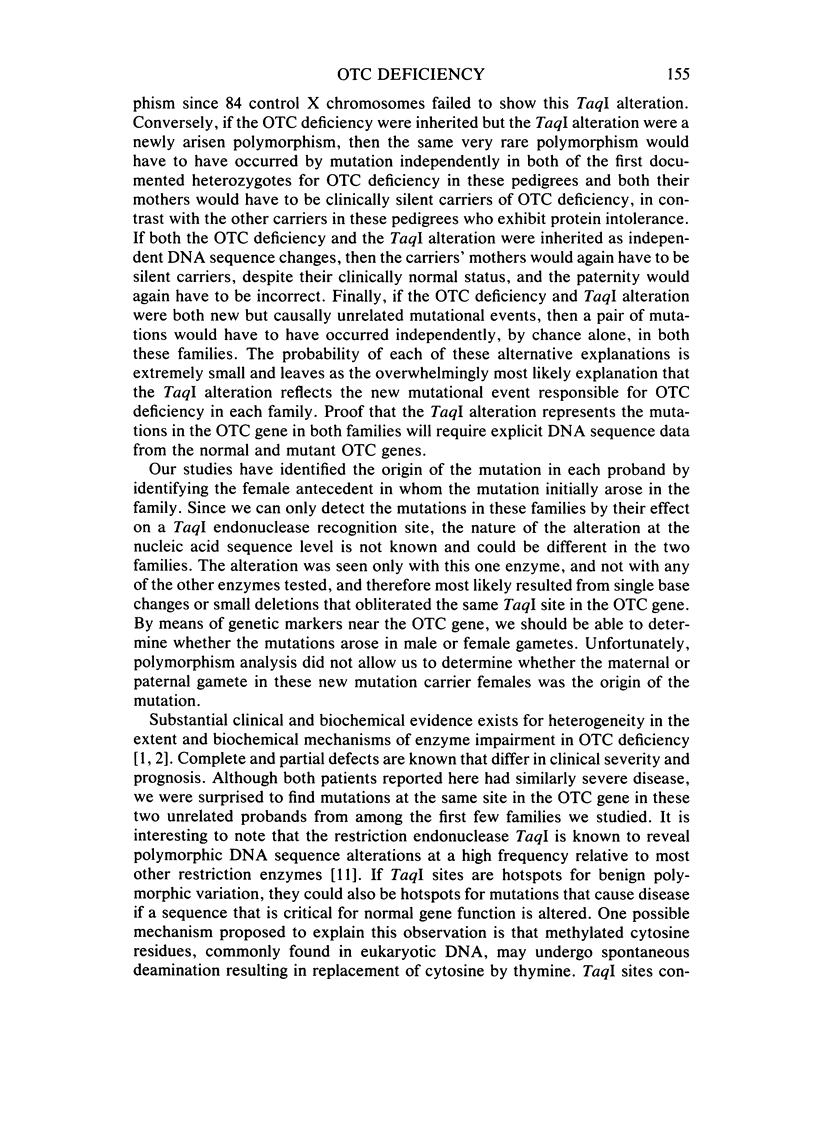
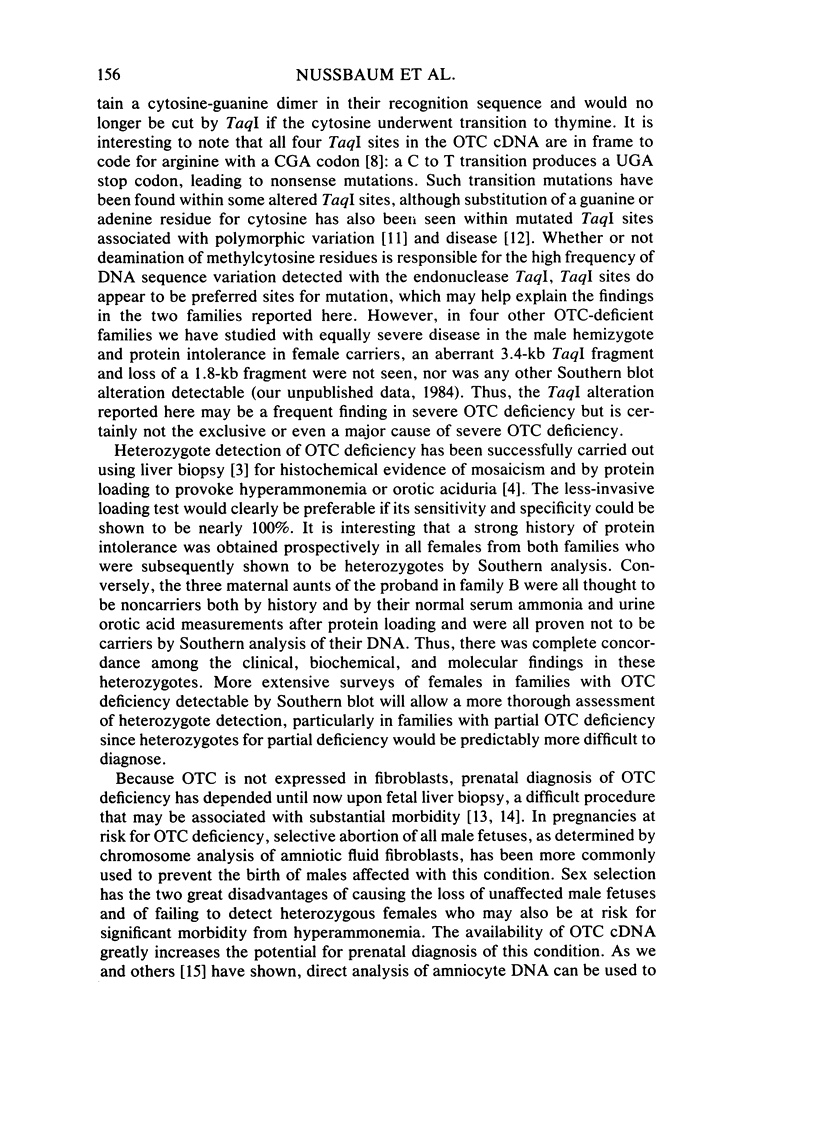
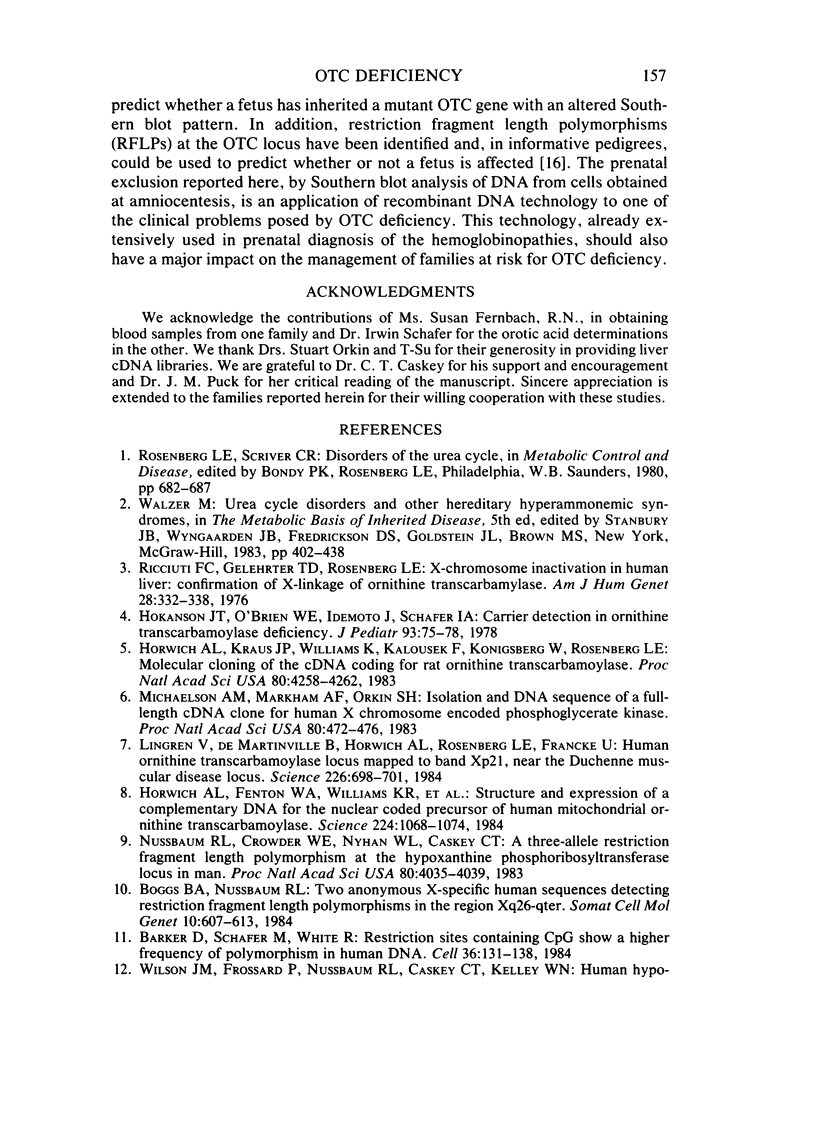
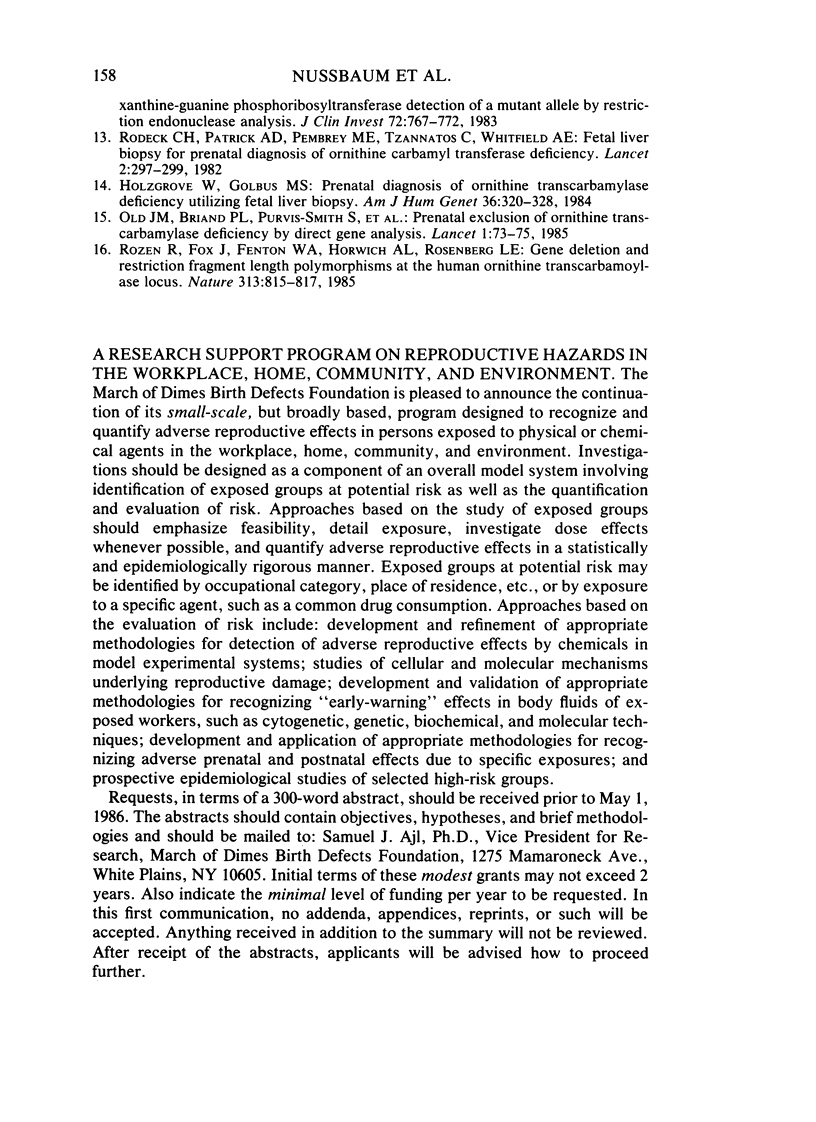
Images in this article
Selected References
These references are in PubMed. This may not be the complete list of references from this article.
- Barker D., Schafer M., White R. Restriction sites containing CpG show a higher frequency of polymorphism in human DNA. Cell. 1984 Jan;36(1):131–138. doi: 10.1016/0092-8674(84)90081-3. [DOI] [PubMed] [Google Scholar]
- Boggs B. A., Nussbaum R. L. Two anonymous X-specific human sequences detecting restriction fragment length polymorphisms in region Xq26----qter. Somat Cell Mol Genet. 1984 Nov;10(6):607–613. doi: 10.1007/BF01535226. [DOI] [PubMed] [Google Scholar]
- Hokanson J. T., O'Brien W. E., Idemoto J., Schafer I. A. Carrier detection in ornithine transcarbamylase deficiency. J Pediatr. 1978 Jul;93(1):75–78. doi: 10.1016/s0022-3476(78)80606-4. [DOI] [PubMed] [Google Scholar]
- Holzgreve W., Golbus M. S. Prenatal diagnosis of ornithine transcarbamylase deficiency utilizing fetal liver biopsy. Am J Hum Genet. 1984 Mar;36(2):320–328. [PMC free article] [PubMed] [Google Scholar]
- Horwich A. L., Fenton W. A., Williams K. R., Kalousek F., Kraus J. P., Doolittle R. F., Konigsberg W., Rosenberg L. E. Structure and expression of a complementary DNA for the nuclear coded precursor of human mitochondrial ornithine transcarbamylase. Science. 1984 Jun 8;224(4653):1068–1074. doi: 10.1126/science.6372096. [DOI] [PubMed] [Google Scholar]
- Horwich A. L., Kraus J. P., Williams K., Kalousek F., Konigsberg W., Rosenberg L. E. Molecular cloning of the cDNA coding for rat ornithine transcarbamoylase. Proc Natl Acad Sci U S A. 1983 Jul;80(14):4258–4262. doi: 10.1073/pnas.80.14.4258. [DOI] [PMC free article] [PubMed] [Google Scholar]
- Lindgren V., de Martinville B., Horwich A. L., Rosenberg L. E., Francke U. Human ornithine transcarbamylase locus mapped to band Xp21.1 near the Duchenne muscular dystrophy locus. Science. 1984 Nov 9;226(4675):698–700. doi: 10.1126/science.6494904. [DOI] [PubMed] [Google Scholar]
- Michelson A. M., Markham A. F., Orkin S. H. Isolation and DNA sequence of a full-length cDNA clone for human X chromosome-encoded phosphoglycerate kinase. Proc Natl Acad Sci U S A. 1983 Jan;80(2):472–476. doi: 10.1073/pnas.80.2.472. [DOI] [PMC free article] [PubMed] [Google Scholar]
- Nussbaum R. L., Crowder W. E., Nyhan W. L., Caskey C. T. A three-allele restriction-fragment-length polymorphism at the hypoxanthine phosphoribosyltransferase locus in man. Proc Natl Acad Sci U S A. 1983 Jul;80(13):4035–4039. doi: 10.1073/pnas.80.13.4035. [DOI] [PMC free article] [PubMed] [Google Scholar]
- Old J. M., Briand P. L., Purvis-Smith S., Howard N. J., Wilcken B., Hammond J., Pearson P., Cathelineau L., Williamson R., Davies K. E. Prenatal exclusion of ornithine transcarbamylase deficiency by direct gene analysis. Lancet. 1985 Jan 12;1(8420):73–75. doi: 10.1016/s0140-6736(85)91966-x. [DOI] [PubMed] [Google Scholar]
- Ricciuti F. C., Gelehrter T. D., Rosenberg L. E. X-chromosome inactivation in human liver: confirmation of X-linkage of ornithine transcarbamylase. Am J Hum Genet. 1976 Jul;28(4):332–338. [PMC free article] [PubMed] [Google Scholar]
- Rodeck C. H., Patrick A. D., Pembrey M. E., Tzannatos C., Whitfield A. E. Fetal liver biopsy for prenatal diagnosis of ornithine carbamyl transferase deficiency. Lancet. 1982 Aug 7;2(8293):297–300. doi: 10.1016/s0140-6736(82)90272-0. [DOI] [PubMed] [Google Scholar]
- Rozen R., Fox J., Fenton W. A., Horwich A. L., Rosenberg L. E. Gene deletion and restriction fragment length polymorphisms at the human ornithine transcarbamylase locus. 1985 Feb 28-Mar 6Nature. 313(6005):815–817. doi: 10.1038/313815a0. [DOI] [PubMed] [Google Scholar]
- Wilson J. M., Frossard P., Nussbaum R. L., Caskey C. T., Kelley W. N. Human hypoxanthine-guanine phosphoribosyltransferase. Detection of a mutant allele by restriction endonuclease analysis. J Clin Invest. 1983 Sep;72(3):767–772. doi: 10.1172/JCI111047. [DOI] [PMC free article] [PubMed] [Google Scholar]




